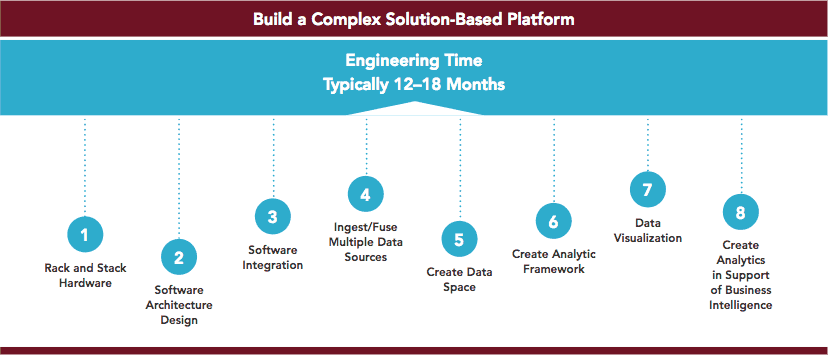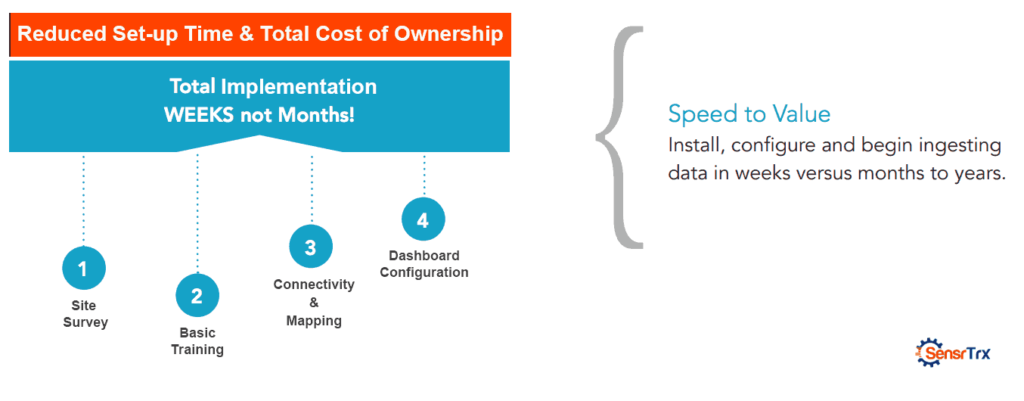As affordable SaaS solutions have entered the market and evolved, the case for building a homegrown system to manage critical manufacturing operations like analytics vs. buying something is more often than not a moot one.
What Was Perhaps True Years Ago Simply Doesn’t Apply Today
Given the SaaS options available, it simply doesn’t make sense to invest hard-won capital into reproducing this capability internally or spending money to customize a complex platform that wasn’t built specifically to gather and display manufacturing analytics and KPIs.
Our arguments against building out your own manufacturing analytics platform versus buying one are fairly straightforward:
- It will cost you more to build it.
- It will take you longer to build it.
- It will take more resources to support and update it.
- There’ll be a greater risk no one will use it.
- There’ll be a greater possibility it will be abandoned and scrapped.
- There’s a higher risk it won’t solve the original problem it was meant to solve or help the people it was meant to help. (Believe it or not, we see this a lot)
Building out an enterprise solution can take months to design and implement. Once built, these systems become expensive to maintain and update, adding to an overall greater Total Cost of Ownership but the real costs will be the time and energy spent.


The #1 reason for buying and implementing Mingo instead of building something custom? We want you to start gaining visibility into your manufacturing right away so you can start measuring KPIs and improving efficiencies as soon as possible.
Given all the things you could have done in the meantime while waiting for your complex or custom implementation: downtime analysis and remediation, scrap reduction, improved throughput, energy, and other savings, etc. the decision shouldn’t be between build vs. buy, but rather:
Do you want these capabilities now?
or
Do you want to wait until later?
In spite of this logic, we continue to see stubborn exceptionalism in the manufacturing sector persisting along the lines of:
“We do things differently. We need to build out our own platform to suit our unique process.”
Basic dashboards track OEE, availability, quality, cycle times, performance among many others but these are augmented to show unique downtime reasons. You can also customize the dashboards you see fit to and display real-time data relevant to a department, work cell or machine operator.
The Value Of Your Data Will Be Defined By Your Ability To See It In Context
Gathering data from the factory floor isn’t in and of itself a difficult technical matter. The real challenge will come after you’ve acquired it since the data will need context to be useful. Mingo allows you to see data by part and machine or by shift or operator and graph performance over time.
Another build scenario we see often arises from the initial investment in an enterprise tool:
“We already have an enterprise Business Intelligence tool for that, we just need to build it out.”
Business Intelligence platforms like Tableau and Power BI promise to provide deep insight into a manufacturer’s operation. In order to justify the cost of this software, business owners shoulder the platform with tasks it isn’t specifically made for. In a recent blog post, we outlined some of the problems relying on these business intelligence systems to do the same job as the Mingo application.
In order to leverage your BI system for manufacturing analytics, you will still have to invest in customization that will take time and money. Just to see a simple metric like machine downtime, you’ll have a laundry list of tasks ahead of you:
- You’ll still have to get the data from each machine and process it.
- You’ll still have to contextualize it.
- You’ll still have to develop technical resources or hire expensive consultants to build out meaningful dashboards.
We don’t see Mingo and BI as mutually exclusive, but rather complementary. Our dashboards will inform any other BI capabilities you build out at the enterprise level. Saving you the time it would take to build them from scratch there, and allowing you to leverage the platform for other analytics and insights.
Don’t Take Our Word for it, Ask Your Data Champion What They Need
Make sure you keep in mind the needs of your manufacturing analytics champion (perhaps that’s you). These are the folks tasked with maintaining and evolving critical efficiencies within the plant through continuous improvement and they will be on the front line of any digital transformation efforts to create a smart factory.
They are awash with and perhaps drowning in data from a variety of different systems each providing information and functionality around inventory, tools, materials, products, etc. All of these are important, but their core concern is gaining more visibility into the operations at the machine, line, and plant level in order to improve efficiency.
With the right amount of visibility into operations, they should be able to:
- Provide ongoing insight into continuous improvement initiatives.
- Show month on month improvement in OEE.
- Demonstrate cost savings in labor, scrap reduction, energy and resources, materials, and quality.
- Show ROI for all initiatives.
Instead of asking whether you should build or buy, try asking these key questions to your organization’s data champions.
- What type of visibility do you need to improve performance?
- What do you currently lack that’s hindering continuous improvement?
- What will make your job easier?


